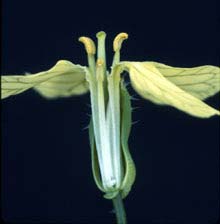Articles and reports from the Life Sciences and chemistry area deal with applied and basic research into modern biology, chemistry and human medicine.
Valuable information can be found on a range of life sciences fields including bacteriology, biochemistry, bionics, bioinformatics, biophysics, biotechnology, genetics, geobotany, human biology, marine biology, microbiology, molecular biology, cellular biology, zoology, bioinorganic chemistry, microchemistry and environmental chemistry.

Novel Method of Creating New Species Observed in Laboratory Yeast
The sex life of yeast has University of Houston biologists fermenting new ideas about evolution and beer.
Researchers studying yeast reproductive habits have for the first time observed a rapid method for the creation of new species, shedding light on the way organisms evolve and suggesting possible ways to improve yeast biotechnology and fermentation processes used in beer and wine-making.
“Most mod

A group of researchers from The Scripps Research Institute (TSRI) have solved the structure of an enzyme that modulates central nervous system (CNS) functions such as pain perception, cognition, feeding, sleep, and locomotor activity.
The enzyme, described in the latest issue of the journal Science, is called fatty acid amide hydrolase (FAAH), and it breaks down certain fatty signaling molecules that reside in the lipid membranes of CNS cells. The TSRI group reports that FAAH modulates the

Study opens door for faster, simpler methods of measuring carbon nanotubes
Building upon this summer’s groundbreaking finding that carbon nanotubes are fluorescent, chemists at Rice University have precisely identified the optical signatures of 33 “species” of nanotubes, establishing a new methodology for assaying nanotubes that is simpler and faster than existing methods.
In research published this week by Science magazine, a spectroscopy research team led by Rice Chem

Researchers at Leeds have identified the gene which gives us bigger brains – the evolutionary attribute separating us from other animals. The gene came to light during a study by Geoff Woods, Jacquie Bond and Emma Roberts into the disease microcephaly, in which people are born with a smaller brain (and head).
Dr Woods, a clinical geneticist at St James’’s, noticed a high instance of microcephaly among his Pakistani patients. He found that, in the 1960s, a dam project in Pakistani-c

Think of it as finding the ultimate genetic engineers.
A plant biologist at Michigan State University has harvested clues about genes that coordinate the development of plant parts that must work together.
The work, published in the Nov. 28 issue of the British science journal Nature, points to a single mechanism that regulates the growth of related parts in flowers – kind of a genetic project manager.
“This is why we’re not just a discombobulated collection

Nearly 40 years ago scientists were startled to discover that the eye, far from being a still camera, actually has cells that respond to movement. Moreover, these cells are specialized to respond to movement in one direction only, such as left to right or right to left.
Now, in a paper in this week’s issue of the journal Nature, biologists at the University of California, Berkeley, have finally detailed the cellular circuit responsible for motion detection in the eye’s retina.